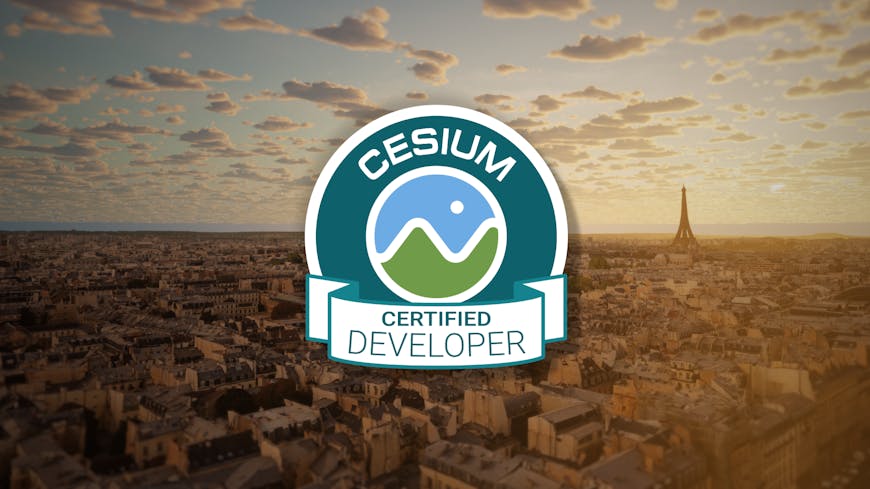Becoming a Cesium Certified Developer
The Cesium Certified Developer program recognizes the technical expertise of developers building on the Cesium platform. The first year and a half of our Cesium Certified Developer program has been wildly successful with over 90 certified individuals and organizations now represented in our directory. Current Cesium Certified Developers found the value of the certification process in validating their skills, connecting them to the Cesium community, and offering opportunities to advance their work and partnerships.
We are going to pull back the curtain on the certification process so you and your team can prepare a strong application.

What does it mean to be Cesium Certified?
The ultimate goal of the certification process is to validate a developer’s excellence in building with Cesium. We certify developers when we’re confident in their ability to problem solve and act as an expert participant in the Cesium community.
The final question we ask of an applicant internally is, “If a partner approached us about their skill level with Cesium for a job developing with Cesium, do we feel like we can recommend this person or organization?” Following the steps in this blog post will show you how to get our “Yes.”
The Process
Application
Send in your application, this shows us your intent to start the certification process.
Project
After you send in an initial application, we request a full project submission demonstrating your expertise. Please make sure you have read through our terms of service and have submitted something unique, not just your version of our tutorials. While your project does not have to be live to the public, your project should be in working order without errors.
Each project submission should contain these elements:
- Narrative: An in-depth overview of the project, including the project goal, steps involved in creating your project, final result of the project, and next steps or future work.
- Architecture: Diagrams, technical documentation, and as much supporting code as possible to show us your expertise using Cesium.
- Supporting documents: Visuals, applications, or videos that explain the project implementation to someone unfamiliar with the project.
If you are missing any of these essential elements, we will reach out and request them.
Submitting a project is the start of a conversation with the Cesium team. There is no pass/fail, but you must be ready for potential questions, updates, and self-guided learning.
Project requirements
You can apply to be certified on CesiumJS, Cesium ion, or with one of the 3D runtime engines (Cesium for Unreal, Cesium for Unity, Cesium for Omniverse, etc.). We’ve also included links to tutorials and documentation that can guide your work, please check out our learning page and blog for the full set of resources.
Generally, here’s what we’re looking for:
JS/ion must-haves
- Familiarity with sandcastles and how to customize to needs
- Minimum:
- Adequate knowledge of modern JS
- Errors all handled
- Show off at least three:
(This list is not exhaustive—there are other advanced features one can show off.)
3D runtime engine must-haves
- Move beyond dropping an animation on top of photogrammetry data
- Minimum:
- Must properly use the plugin (no artifacts, no bugs)
- Custom logic: blueprints/code
- Clear reasoning for full 3D geospatial context
- Show off at least three:
(This list is not exhaustive—there are other advanced features one can show off.)
An above-and-beyond project solves a complex problem for the Cesium community, for example by submitting a PR.
Example of a good submission
There is no cookie-cutter submission for us to share as a “best in class” since each project is a reflection of the applicant. A good place to start is here. Nompumelelo Mtsweni’s submission does a great job describing why the project was built, how it was built, and how problems were solved along the way.
Get started
Apply now and get started!
If you are not confident yet in your development skills you can work through our learning pathways.
We can’t wait to see what you’ve built!
A version of this blog is available in Japanese here.